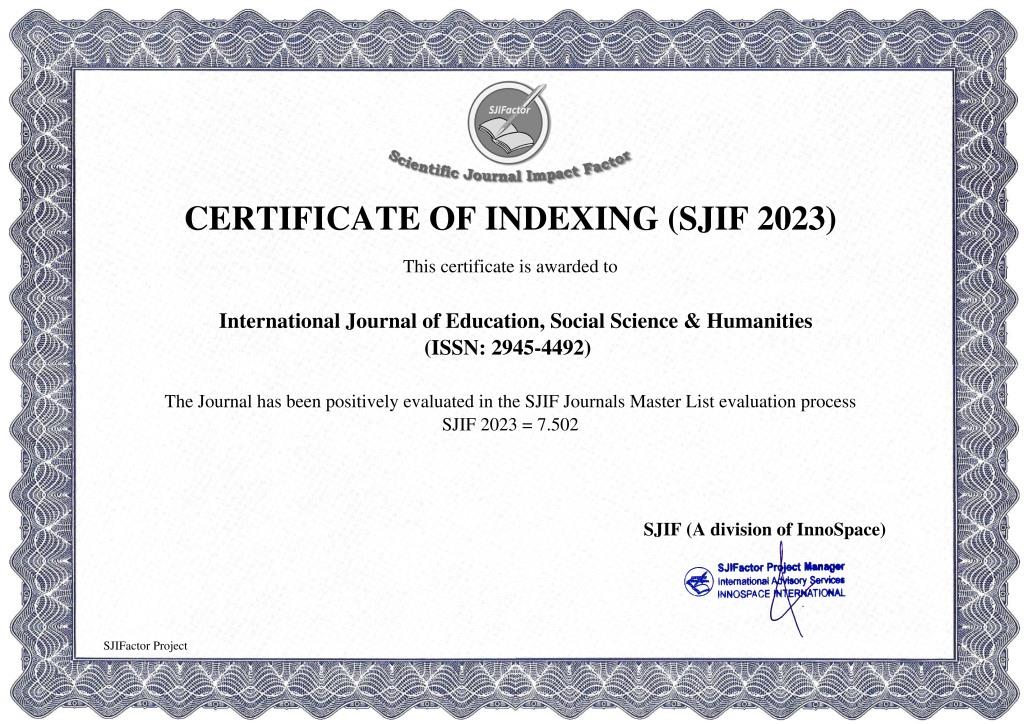THE ADEQUACY OF TRANSLATION OF MATH TERMS INTO UZBEK LANGUAGE
Keywords:
neutrality, reality, generalization, concretization, dialects, Avoirdupois, feet, ounce, Fahrenheit, pintAbstract
In general, fairy-tales include a number of notions which help children get mathematical notions about the surrounding world, its variety and glory. Fairy-tales not only develop children’s imagination but also develop their skills to use mathematical connections and basic notions in a simple understandable language in primary and preschools mathematics education, at the same time putting
stress on these connections and so paving the way to further serious acquisition of the systemic course of mathematics. It is advisable to use fairy – tales for the development of the learner’s comprehension of mathematical notions.
References
Andrew Lang, The blue fairy book. 5th ed. – London: Longmans, 1991.
Austin J.L. How to do things with words / Austin J.L. - Oxford Un. Press, 1962. - 169 p.
Azuma, H. (1986). Why study child development in Japan. In H. Stevenson, H. Azuma, & K. Hakuta (Eds.), Child development and education in Japan (pp. 312). New York: W.H. Freeman.
Bankart, C. P., & Bankart, B. (1985). Japanese children’s perceptions of their parents. Sex Roles, 13 , 679–690.
Brumft C. Communicative Methodology in Language Teaching. –Cambridge University Press, 1992. –166 p.
Calder, N. (2016, October). Apps: Appropriate, applicable, and appealing? In T. Lowrie, & R. Jorgensen (Eds.)Digital games and mathematics learning (pp.233–250). Dordrecht, Netherlands: Springer .
Children's literature and didacticism in the Arab World also see Inani, H. Adab Et-tifl ( Children's Literature ). Amman: Dar Al-Fikr. 1999.
Childcraft volume 13 mathemagic by worldbook easy math for kids.(1992 Edition )














